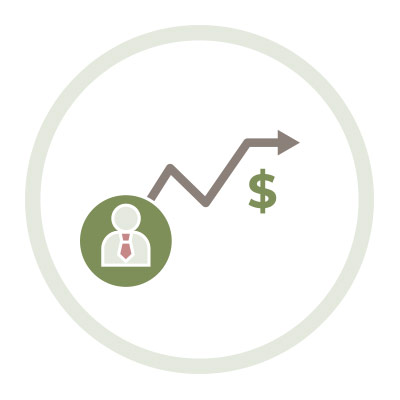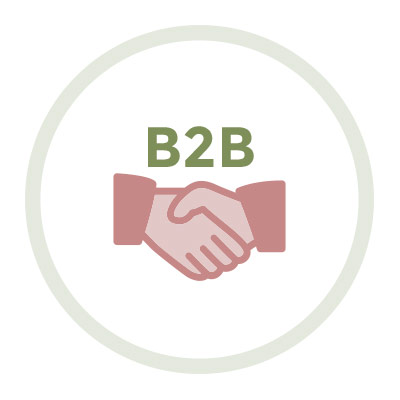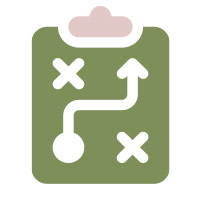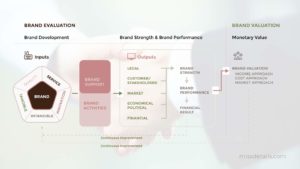
Welcome back to the Miss Details Deep Dive blog series on Customer Acquisition Cost.
In the first two entries of our customer acquisition exploration, we introduced you to the concept of CAC and started to delve deeper into the formulas and factors that comprise this critical aspect of your company’s financial picture.
This week, we’re going to describe how business size impacts CAC, and then explore how those costs vary across industries. By the end, you’ll have gained greater insight into your own businesses’ costs, and might have picked up a tip or two which could lead to managing costs and improving your bottom line.
Quick Links for the Full Deep Dive Series on Customer Acquisition Cost
Part 1: Introduction | Part 2: Exploring Customer Acquisition | 📍Part 3: How Industry Affects Your Costs | Part 4: Why Branding Makes a Difference | Part 5: Customer Retention + Lowering Your Cost | Part 6: Conclusion
Scaling Your Costs: Why Business Size Matters
Businesses operate differently at different scales. Let’s use as an example a local sneaker store, Local Sneakers, compared with an international retailer, let’s call them Big Box Shoes.
Local Sneakers has been around for over 50 years, opened by a husband and wife who eventually passed its ownership on to their daughter. Its clients include customers who have brought their children, and now grandchildren, to the store, as well as adults who have been shopping there all their lives. They have a smaller product line than Big Box Shoes, but their salespeople are experienced and knowledgeable. Located on a side road in a small town, they don’t get much walk-in traffic except for some nearby residents. They run a few local advertisements, including a sign in the high school gymnasium and a blurb on some restaurant menus, but most of their clients already know who they are.
Big Box Shoes is new in town, opening a few years ago. Their store is three times the size of Local Sneakers and has a much larger selection, but they rely heavily on seasonal staff that doesn’t know their products very well. Located in a new mall, most of their customers stop by on a whim, drawn in by the pictures of famous athletes and spokespeople in the windows and their familiarity with the store from its Super Bowl advertisements. The store’s regional manager is spending tens of thousands of additional dollars, hosting autograph signings with the town’s resident sports star and running commercials during the evening news.
Even though both businesses are selling the same products for the same prices, there’s a huge difference in how they acquire their customers, as well as in the profit necessary for each sale. These disparities are due to the size of not only the overall companies, but of their marketing departments and budgets.
Small to Medium Businesses
Building a customer base takes time and effort, and smaller businesses especially have to focus on their CAC to ensure their products and services are properly priced. Businesses who spend too much money on acquisition can increase their sales, yet still put themselves out of business.
Clients go to local stores and use local services for numerous reasons:
- Local stores and their employees have a connection to the community
- Customers feel like they’re receiving quality service, rather than being “just another job” to a conglomerate or corporation
- Customers feel that they’re supporting their friends, family, and community members
At smaller businesses, customers most likely expect higher levels of employee knowledge and familiarity. This requires comprehensive employee training and increased retention costs, as skilled employees with years or decades of experience will cost more than younger or less experienced workers.
Medium to Large Businesses
Once businesses have grown to a certain size (how large that is depends on industry and situation), their costs change. Instead of only attempting to win over new customers, businesses now need to strike a balance between attracting the new and retaining the existing, and using those existing customers to help grow the base.
Larger businesses have additional costs from their smaller counterparts:
- Increased marketing spending to keep the brand relevant, including high-profile ads (national television, prominent billboard campaigns, social media, influencers etc.)
- Increased auxiliary costs for employee training, hiring, and support positions (administrative, human resources, accounting/financial, etc.)
How Industry Affects Customer Acquisition Costs
Of course, much more than business size goes into what affects CAC. Different industries, locations, longevity, client base, and many other factors all make their mark, and each company’s unique setting requires them to directly tailor their marketing funnel to increase their client base.
Ultimately, no matter what industry you’re in, you’re going to be using the same basic tools to move your customers into and through your sales funnel, though the approach and combination of tools you use will depend on your specific industry and circumstance:
- Social Media
- Email Marketing
- Content Marketing (Blogging, videos, etc.)
- Public Relations
- Direct Mail
No matter what it does or who it’s aimed at, your business will almost certainly need websites, graphics, employees, time and effort. Those factors apply across the board, though they take different forms in various situations.
Here are how a few different industries can think about customer acquisition:

Retail
Classic brick and mortar storefront businesses have two ways that prospective customers can find them, online and in real life. For the latter, they might have only an instant to capture new customers who walk by. Everything from a well-maintained display window to an eye-catching sign, a clean sidewalk, a fresh paint job, and other elements of their outwards appearance all contribute to customer acquisition. Once inside the store, having properly trained employees and a neatly organized shop also help customers find what they need or want. The time spent planning those layouts and training the staff also factor into customer acquisition costs.
For the retailer’s online presence, they try make similar first-glance impressions. Online traffic looking for a niche product or drawn to smaller businesses’ sites will base their opinion of the quality of the product on the quality of the website. Website hosting, development, and maintenance, as well as a web manager and graphic designer, also count towards acquisition costs.

Financial Services
Clients who are in the market for financial services aren’t making a snap decision on spending their money. They’re coming to a carefully reasoned decision about their long-term financial health, and that’s a major decision for individuals, families, and other businesses. With people’s entire livelihoods at stake, financial service providers must spend additional resources on security, skilled labor, technology, and other related areas.
Financial service providers also need to spend marketing dollars to acquire customers, because they need to build up a sense of trust and familiarity. Think about how often you see commercials for investment firms like Fidelity or Charles Schwab, or how many banks sponsor sports arenas and plaster their names on buildings in cities large and small. They do this to prove their financial success and signal to potential customers that their money would be safe with them.

Travel
The travel industry is interesting because people who utilize it are often doing so in wildly different ways: they could be a one-time traveler looking for a hotel they’ll never stay in again, or a frequent business traveler who’s thinking about the long term. Either way, they need a quality, reliable service. Airlines, cruise lines, and car rental services all spend heavily on advertising to keep their service in the customer’s mind, but it could be years or even decades before that name recognition pays off when a family decides to take their first cruise, or a young adult is ready to rent their first car.
Travel companies can require heavy up-front spending to attract customers, especially those who are looking for a go-to airline, hotel chain, car rental service, or some combination of the above. Perks plans like frequent flier miles, VIP service, discounts, affiliate programs, and others all factor in, and it’s a race of benefits that can cut into profit margins if you’re not careful. They also need to be ready to spend money on customer retention, because issues inevitably arise in the travel industry: flights get delayed, cars break down, trains have problems. Companies that acknowledge these issues and seek to do right by their customers might cost themselves profits in the short-term, but those smart customer retention measures help them stay in business for the long run.

Non-Profit
Non-profit organizations, by virtue of their title, have a different mission than the other types of companies in this list, but that doesn’t mean they don’t have to worry about attracting customers. For some NPOs, their ‘customers’ are donors or benefactors; for others, they’re traditional customers or visitors whose funds and purchases keep that organization going.
Attracting customers in the non-profit sector involves a good deal of outreach and education, as customers won’t necessarily search those organizations out on their own. Start-up costs for NPOs are high because they need to establish trust and reliability, and convince potential customers that their cause or mission is worth the money. The best run non-profits are those who run like a for-profit business. Yes, they need as much as possible to go towards their cause however, there needs to be a marketing budget

B2B Services
The B2B service industry is large and varied, including everything from coaches to professional services, marketing agencies to business consultants. It’s full of specialized, skilled workers who work with their clients in private or group settings, providing services tailored to their clientele. While the B2B service industry includes major corporations who can afford to spend millions on advertising and consumer awareness, many service businesses are small operations or solopreneurs, or are businesses with a large skilled labor force but a small marketing department.
In the service industry, word of mouth and reputation are crucial. Service industry professionals need to think about appearance— their websites, their business cards, even the clothes they wear signal to their potential customers whether or not you’re the right fit for them. Networking events (both virtual and in person) and other time-heavy activities become an important part of your business and acquisition costs.

Think About Your Situation
Although similar to others in your industry, the exact process on how your company gains customers is unique and the way you spend your time and money to do so should reflect that. The exact mix of marketing tactics that your business chooses along with your business’ location, its history, its orientation within the local, regional, national, or global landscape all create the base for your customer acquisition costs. Listen to feedback from your customers and study how your competitors or those in adjacent fields position themselves to appeal to the widest base at the lowest cost.
Is there anything you’re not thinking about that could have a major impact on your costs? Of course there is. Come back [next week] for our next installment, where we will show you why your branding makes even more of an impact on your costs than you ever thought.
Don’t want to miss out on our articles and insights?
Sign up for the Miss Details newsletter today.
More From This Deep Dive Series on Customer Acquisition Cost
About Miss Details
Founded by Tanya Gagnon in 2004, Miss Details is a full-service branding and design firm which helps entrepreneurs and companies launch, adjust and reinvent key aspects of their branding and business marketing strategy. With a background in all aspects of interior and experiential design and a passion for data-backed design, Tanya leads the Miss Details team to guide her clients through everything from a refreshed website to a full rebranding, helping them put the pieces together to create a consistent, authentic, unique brand image.



